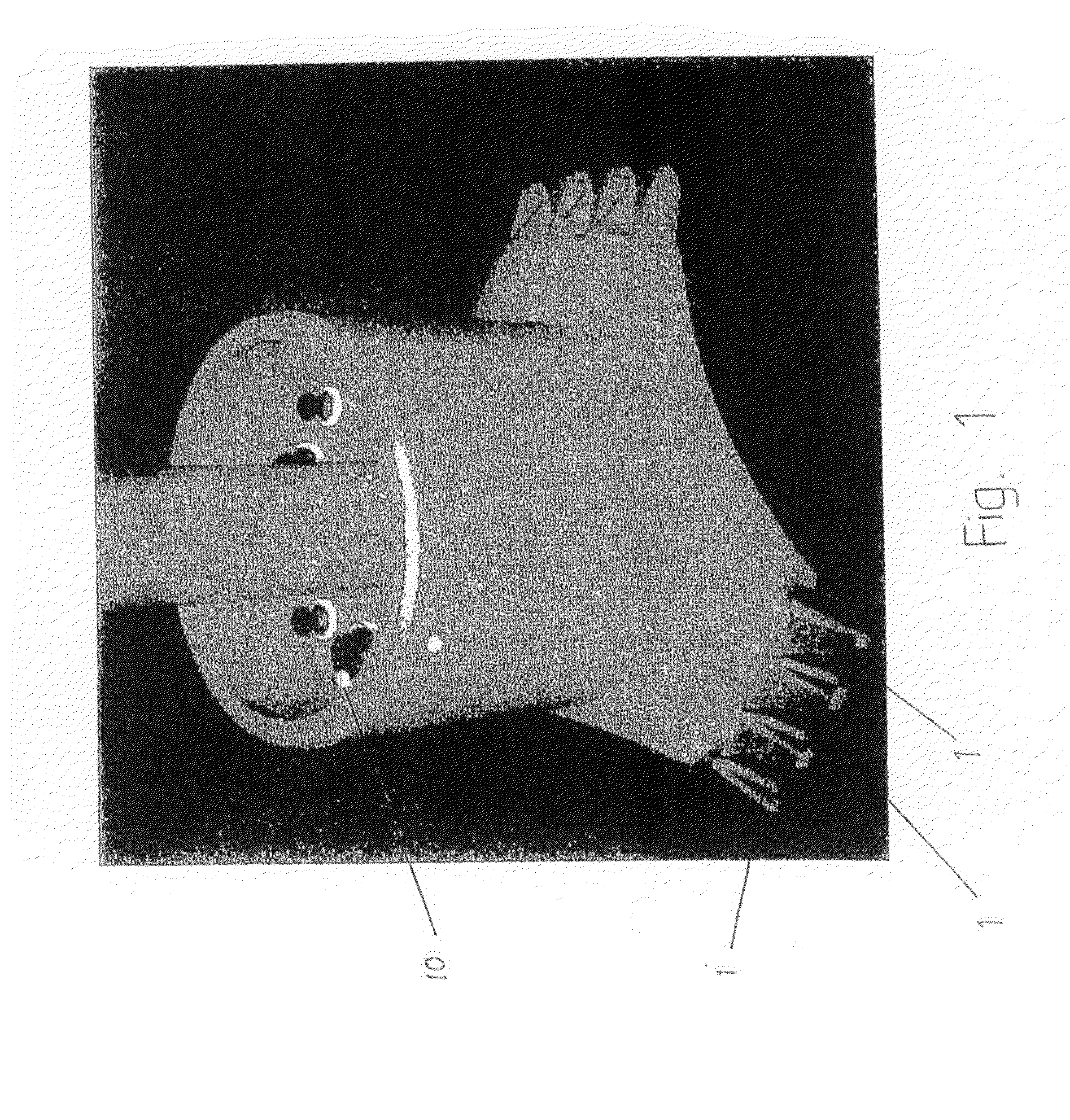Mooring Pull-In System
- Summary
- Abstract
- Description
- Claims
- Application Information
AI Technical Summary
Benefits of technology
Problems solved by technology
Method used
Image
Examples
Embodiment Construction
[0015]Reference is first made to FIG. 1 illustrating the inner geostationary part of a turret. The turret is mounted into or on a vessel, and the vessel can rotate around the inner geostationary part of the turret. In the lower part of the turret 9, cribs are arranged for hanging up of respective anchoring lines. Cross bars on the coupling part in the upper end of each anchoring line, fit into the respective cribs. Also, hanged-up risers 10 are illustrated.
[0016]It is no proviso for the invention that a turret or an FPSO-vessel or similar is used. The vessel can be any floating installation such as a rig, as the cribs can be mounted for example in the corners of the rig.
[0017]With reference to FIG. 2, it is illustrated how the pull-in of an anchoring line 2 is undertaken in order to place the coupling part 3 into the crib 1. More particularly, a winch 4 with guiding sheaves 5 and 6, over which guiding sheaves a pull-in wire 7 is arranged, is used. The anchoring line is pulled in unt...
PUM
 Login to View More
Login to View More Abstract
Description
Claims
Application Information
 Login to View More
Login to View More - R&D
- Intellectual Property
- Life Sciences
- Materials
- Tech Scout
- Unparalleled Data Quality
- Higher Quality Content
- 60% Fewer Hallucinations
Browse by: Latest US Patents, China's latest patents, Technical Efficacy Thesaurus, Application Domain, Technology Topic, Popular Technical Reports.
© 2025 PatSnap. All rights reserved.Legal|Privacy policy|Modern Slavery Act Transparency Statement|Sitemap|About US| Contact US: help@patsnap.com



